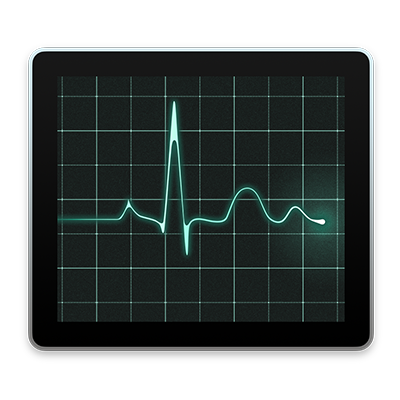JAMF specializes in managing Apple devices and is the best network monitoring software for. See real-time CPU, network, or disk status in the Dock. It’s easy to keep an eye on your system status without even looking at the Activity Monitor window—you can monitor your CPU, network, or disk usage as a live graph right in the Dock. Your computer is equipped with a lot of sensors so that the system can keep an eye on the health of the hardware. MacOS has a built-in system monitoring utility called Activity Monitor, which may be unfamiliar to most casual Mac users.And even fewer understand how to properly use Activity Monitor to manage memory usage, fix slow apps, and troubleshoot various many other issues.
Close unresponsive apps and processes
When your system is acting sluggish or simply not responding, an app or process may be the source of the problem. You can use Activity Monitor to locate the troublesome app or process and force it to quit.

See how much energy your Mac is using
You can find out how much energy your Mac is using, and see which apps or processes are using the most energy.
Drweb for mac os. However, so far, they are few and far between, and it’s rare to come across one. To be installed under iOS, an application has to be downloaded from Apple Store (except for jailbroken devices), and all the applications are verified before being uploaded by their developers into the store. For the time being, this product can't be developed, and here's why.Of course, there are no impregnable systems and there are malicious programs for iOS too.
See real-time CPU, network, or disk status in the Dock
It’s easy to keep an eye on your system status without even looking at the Activity Monitor window—you can monitor your CPU, network, or disk usage as a live graph right in the Dock.
My Photo Book is the simplest and most powerful photobook creation software. Including: free style resizing and placing of content, collages of images, faded backgrounds, text (in any language. Mother’s Day gift: Create a photo book in Apple Photos for Mac Mother’s Day is May 13. Get your order in now to make sure it arrives on time. Best photo books for mac.
To browse the Activity Monitor User Guide, click Table of Contents at the top of the page.
You can make all of your displays mirror each other, or extend your workspace with different apps and windows on each display. If you use an external display with your Mac notebook, you can also use closed-display mode.
Check your requirements
- Check the ports on your Mac to find out whether you need an adapter.
- Check how many displays your Mac supports: Choose Apple menu > About This Mac, click Support, then click Specifications. On the webpage that appears, the number of displays your Mac supports appears under Video Support.
Use extended desktop mode
Maximize your workspace with extended desktop mode, which lets you enjoy full-screen apps and windows on each monitor. Then, use Mission Control to organize apps and windows across your displays. If your Dock is on the bottom of your screen, it appears on any of your displays when you move your pointer to the bottom edge of your display.

Turn on extended desktop mode
- Make sure that your external display is turned on and connected to your Mac.
- Choose Apple menu > System Preferences, then click Displays.
- Click the Arrangement tab.
- Make sure that the Mirror Displays checkbox isn’t selected.
Arrange your displays or change your primary display
So that you can move apps and windows across your displays in one continuous motion, arrange your displays to match the setup on your desk. You can also change your primary display, which is where your desktop icons and app windows first appear.
- Choose Apple menu > System Preferences, then click Displays.
- Click the Arrangement tab.
- To change the position of a display, drag it to the desired position. A red border appears around the display as it's moved.
- To set a different display as the primary display, drag the menu bar to the other display.
Use video mirroring
With video mirroring, all of your displays show the same apps and windows.
Turn on video mirroring
- Make sure that your external display is turned on and connected to your Mac.
- Choose Apple menu > System Preferences, click Displays, then click the Arrangement tab.
- Make sure that the Mirror Displays checkbox is selected.
Use AirPlay
Ctkahp Process Mac Os
With Apple TV, you can mirror the entire display of your Mac to your TV, or use your TV as a separate display. To turn on AirPlay, follow these steps:
- Make sure that your TV is turned on.
- Choose in the menu bar, then choose your Apple TV. If an AirPlay passcode appears on your TV screen, enter the passcode on your Mac.
- Mirror your display or use your TV as a separate display:
- To mirror your display, choose , then choose Mirror Built-in Display.
- To use your TV as a separate display, choose , then choose Use As Separate Display.
- To turn off AirPlay, choose , then choose Turn AirPlay Off.
If you don't see in the menu bar, choose Apple menu > System Preferences, click Displays, then select the 'Show mirroring options in the menu bar when available' checkbox.
Learn more about how to AirPlay video from your Mac.
System Monitor For Mac Os X 10.8
Learn more
